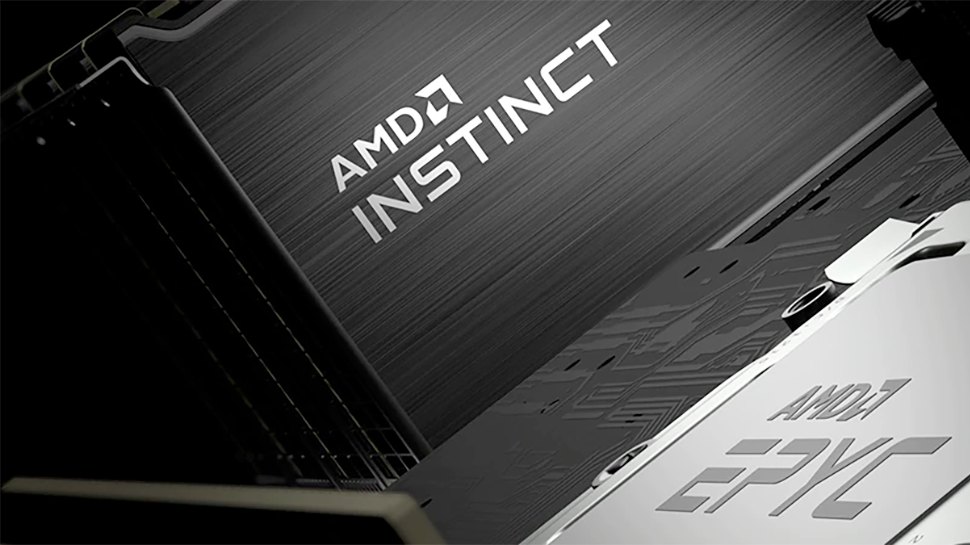AMD will beat Nvidia to launching AI GPUs on the cutting-edge 2nm node — Instinct MI450 is officially the first AMD GPU to launch with TSMC's finest tech
OpenAI will be among the first to get these accelerators.

Compute chiplets of AMD's next-generation Instinct MI450-series accelerators based on the CDNA 5 architecture set to be introduced in the second half of next year will be made on TSMC's N2 (2nm-class) fabrication technology, marking the first time the company will use a leading-edge manufacturing process for AI GPUs. Usage of the latest production node could give AMD a major advantage when competing against Nvidia's upcoming Rubin GPUs and systems on their base, which are set to be made on N3.
"We are really excited about our MI450 generation, it has 2nm technology, so the most advanced fabrication capability, it has rack scale solutions, so we are really putting all of these compute elements together," Lisa Su, chief executive of AMD, revealed in an interview with Yahoo Finance. "The way to think about it is it takes a village to build this all. So, you know, we are of course very, you know, proud and focused."
AMD's current-generation CDNA 4-based Instinct MI350-series AI accelerators use compute chiplets produced by TSMC using one of its proven N3-series fabrication technologies (which entered mass production in late 2022), so it is reasonable for the company to transit to a 2nm-class manufacturing process for its next-generation GPUs for AI and HPC applications. AMD's Instinct MI450-series accelerators will be the company's first processors tailored specifically for AI and, therefore, support appropriate data formats and instructions. Perhaps, a new node will enable AMD to pack in some secret sauce into its new compute GPUs.
Indeed, N2 promises tangible — as TSMC calls them 'full node' — improvements compared to predecessors, such as a 10% to 15% performance improvement at the same power or complexity, or a 25% to 30% power reduction at the same frequency, along with a 15% increase in transistor density compared to N3E. The key advantage of the new production node will be gate-all-around (GAA) transistors that enable developers to tailor designs for maximum efficiency when using design and technology co-optimization (DTCO). Overall, by migrating to N2, AMD will obtain a broad set of benefits that include performance efficiency and transistor density.
Nvidia has already announced that its next-generation Rubin GPUs will be produced using one of TSMC's N3 technologies (presumably N3P tailored for Nvidia's needs), so AMD's Instinct MI450 will have an edge over its key rival when it comes to manufacturing process. AMD's Helios rack-scale solution with 72 Instinct MI450 GPUs will also carry more HBM4 memory (31TB vs 21TB) and offer more memory bandwidth (1,400 TB/s vs 936 TB/s) compared to Nvidia's Rubin-based NVL144 machine. However, Nvidia's next-generation rack-scale solution will offer tangibly higher FP4 (well, NVFP4) performance compared to AMD's Helios (3,600 PFLOPS vs 2,900 PFLOPS), so it remains to be seen which of the systems will be faster and more power efficient, especially given uncertainties with UALink scale-up interconnections for the Instinct MI450-series GPUs.
One of the first customers to adopt AMD's Instinct MI450 is said to be OpenAI, which will start to get the hardware in the second half of next year, with AMD revenue ramping sharply afterward. The project will unfold over multiple phases and should generate double-digit billions in incremental sales once fully operational, according to Su. For AMD, the alliance signifies validation of years of investment in its AI architectures and data center solutions.
Follow Tom's Hardware on Google News, or add us as a preferred source, to get our up-to-date news, analysis, and reviews in your feeds. Make sure to click the Follow button!
Get Tom's Hardware's best news and in-depth reviews, straight to your inbox.

Anton Shilov is a contributing writer at Tom’s Hardware. Over the past couple of decades, he has covered everything from CPUs and GPUs to supercomputers and from modern process technologies and latest fab tools to high-tech industry trends.
-
Evildead_666 Some article corrections may be required :Reply
- Total memory for the AMD system seems to be 31TB, not 51TB as in your article.
- FP4 for the AMD system should also be 2900PF, not 1440PF, which should be the FP8 number
;)
(as per the AMD slide about this)